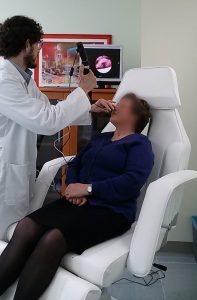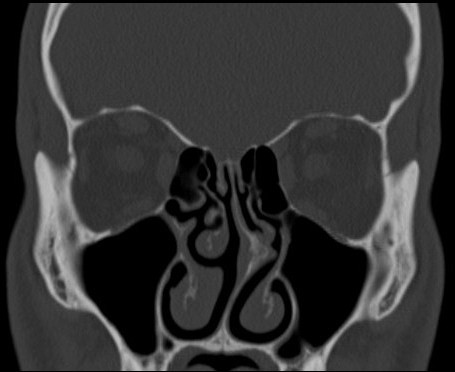 The non-invasively fibroscopy is an examination, Quick, generally well tolerated by the patient that lets you explore the nasal cavities, the pharynx and larynx.
The non-invasively fibroscopy is an examination, Quick, generally well tolerated by the patient that lets you explore the nasal cavities, the pharynx and larynx.
You can perform on an outpatient basis both for adults and children and lasts for a few minutes.
And’ preferable but not mandatory to l ’ examination between meals; l ’ examination is generally well tolerated, It is not painful and causes only mild discomfort rarely may be necessary to apply the anaesthetic sprays.
The fiberscope is equipped with a thin fiber bundle, able to rotate according to the commands of operator which is introduced through one nostril and allows to observe the nasal vestibule, the nasal cavities, the air gaps, in nasal septum, nasopharyngeal cable, the opening of auditory tube, the presence of adenoid tissue, l ’ oropharynx, l ’ hypertrophy of tongue base, the larynx, the motility of the vocal cords, l ’ hypopharynx.
The fiberscope is a key tool for ’ Otolaryngologist who to exclude nasal growths, the pharyngeal and laryngeal. Allows to evaluate the presence of nasal polyps, purulent secretions, sign of sinusitis. In children is the examination of choice to evaluate the adenoid hypertrophy. And’ can also see the vocal cords to study the ’ origin of voice problems (dysphonia), looking for tumors, nodules, polyps, granulomas, Reinke's edema, deficit of motility of the vocal cords. It also has an important role in the evaluation of fiberoptic snoring problems and of the Dysphagia
And’ should make a complicated and if you are having trouble breathing, nasal, chronic sinusitis, epistaxis recurring, effusive persistent otitis media, snoring-sleep apnoea, dysphonia that lasts for more than 15 days, persistent cough without pulmonary problems, appearance of neck Lymphadenopathy.
Transnasal flexible fiberoptic tracheal ranking (possible only in some people very uncooperative)










